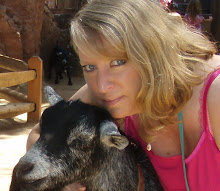Flash-forward twenty-four years: I now know that I did live in London in a past life, and that everything I suspected on my first trip there turned out to be true.
The steps one follows to self-regress are basic meditation techniques: Relaxation, concentration on the inner self so one blocks out all external stimuli, and most of all, visualization and paying attention to stray thoughts are key. I saw myself walking down a long corridor, visualized every step, surrounded myself with protective white light, and "went with" the first stray thought that entered my head when I reached the end of that imaginary corridor. Upon coming out of the experience I wrote down the results. It's full of problems, mostly because at that point I didn't know anything about English history, and so didn't have the words to describe what I was seeing. Yet the kernal of truth was there, even from that very first session:
A medieval castle in the late 1600s to 1800s, judging from the baroque trim of his coat as he sat behind the piano, immersed in turbulent music. I interrupted his playing as I walked into the room, but I didn't walk, I was just there, and then he looked up, and his hair was an ash-brown-blonde and styled in the manner of an English or French gentleman of the time, straight and slightly more than shoulder length, cut with short bangs in the front. He looked maybe a trifle upset at being disturbed, and his face was full of a serene quality, although his eyes seemed full of intensity. His features were decidedly masculine, but his eyes were still beautiful, John Taylor-ish of Duran Duran. His hands were masculine, too, and his silk coat was of a sky blue and patterned, in the style of a long coat and knickers, white stockings, and buckled shoes. I was a woman dressed in white and I had wanted to see him, had to see him. I stood at his side at the piano, and when he stopped playing, there was a silence and tension between us.
This man was Thomas Carter. The painting I have of him doesn't show bangs in his hair, and his tresses are more red than brown; it's still him. I drew a picture, too, which was heavily influenced by my association with someone else in my life at that time, but again, it's still Carter: the chin is strong, the nose small, the eyes well-formed and handsome.

He bears a strong resemblance to Johnny Depp in The Libertine, a movie that came out a good twenty years after my initial past-life memory.

The portrait I have of Thomas Carter was painted in his youth; I am willing to bet that, when I finally find a picture of him in later life, he will be wearing the bangs of my memories and bear a much closer resemblance to Mr. Depp than the portrait by Thomas Hickey shows. Bangs were very popular in the late eighteenth century; just look at this portrait by John Singleton Copley of the Western boys from 1783:



No comments:
Post a Comment